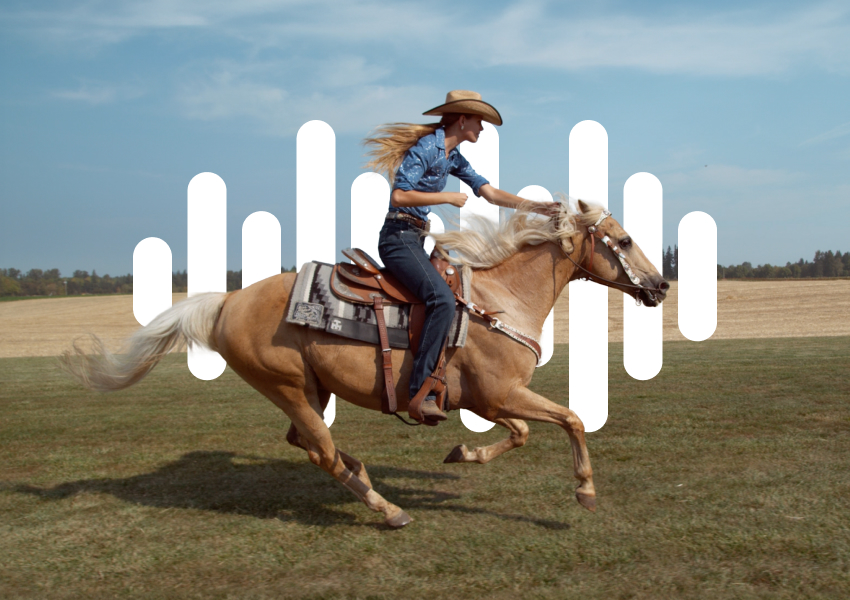Voice-overs play an important role in filmmaking. They can add impact and elevate your storytelling. Could you imagine a nature documentary like Blue Planet without a voice-over? It wouldn’t convey nearly as much information as the visuals alone. Part of the magic of The Princess Bride is how it opens with a narrator.
Including a voice-over in your material can improve your storytelling, help you stand out, and even help with accessibility for the visually impaired. However, writing a voice-over script is a little more technical than just putting some words on a page. Here’s how to go about it to ensure it has the impact you want.
Identify your target audience
When writing your voice-over script, your first move is to define your audience. Who will be watching the film you’re making and, by extension, listening to the voice-over? It might be five to eight-year-olds watching a cartoon that opens with a voice-over explanation of how the superhero gained their powers or met their nemesis. It could be aimed at older people as part of an advertising campaign for life insurance. It might be used to support training materials for anything from health and safety guidance in a factory to online how-tos for SaaS functions. Your voice-over could also be part of your storytelling technique for a TV series, documentary, or film.
Who is listening to the voice-over will determine the tone it takes. Health and safety videos will need to be formal so there are no misunderstandings about the information. A how-to video showing how to search for your customers by demographics in your CRM can be more casual, but always keep it clear and to the point. Voice-overs used as part of animations, time-lapse videos, TV programs, or films will always need to be entertaining, but the precise feel of that entertainment will vary according to who is watching and listening. For example, how you address a three-year-old as the narrator of a cartoon for kids will be different from the narrator of a cooking show.
Define your message and objective
When you have established who is listening and what tone is best to communicate with them, you need to think about the message you’re trying to convey and if you need to use a voice-over to do this. What does a voice-over accomplish that visual story-telling or normal scripting can’t?
For example, a safety video needs to be clear and explain the reasons why a precaution is necessary and the potential consequences of not following the instructions. This type of voiceover usually accompanies the visuals and makes the instructions even clearer than with visuals alone.
Voiceovers can also save time and convey information quickly. We often see this in episode recaps. Instead of watching a collection of previous scenes, a voiceover can tie it all together and get the audience up to speed as quickly as possible.
Writing a suitable voiceover script will be much easier once you have clearly defined your message and objective.
How to structure your script
When you know your audience, have decided on the tone, and established the objectives of your voice-over, you need to structure your script.
The basics of a good voice-over are very simple: it should be attention-grabbing from the first word and finish with something that resonates with the audience. There should be something that sticks with them.
For example, you might only use a voice-over at the beginning of a piece to set the scene. However, if you plan on using voice-overs throughout a recording, the tone should remain consistent. You definitely don’t want to throw in some voice-over at the end of a film that appears out of nowhere, will jar the audience, and could end up looking like lazy filmmaking.
To ensure that your voice-over script conveys what you want it to, try using a storyboard to help you construct it. This will help you include all of the vital elements of the narrative and put them in the correct order so that they make sense to the audience. It can also be helpful to work through a “what you see, what you hear” exercise, describing the elements that need to be voiced to ensure that they are included in the script.
Writing tips and techniques
Write as you would talk. Use your natural voice to write a script. Using contractions such as can’t and don’t is normal, so go with them. Even if you’re writing a more formal script when you’re used to speaking more casually, you don’t need to go over the top. Just be aware of the words that you’re using.
Use short sentences. These are easier for you or your voice actor to speak with fluency and conviction and are also easier for your listeners to follow. Run-on sentences get confusing quickly.
Keep it simple. Use precise and clear language that will be easy for your audience to follow. Don’t use jargon or very complicated words. Again, this makes it easier for both the person recording and the listeners.
Always write out long numbers in words; for example, 1,347,204 should be one million three hundred and forty-seven thousand, two hundred and four.
Aim to speak at a speed of roughly 120 words a minute. Any faster, and it will be too fast for a voice actor to be able to enunciate clearly for the listeners to understand and absorb. Think carefully about what needs to be said in each voice-over block and what can be removed to meet the speed requirements.
If you’re using a lot of voice-over throughout a film, for example, in a documentary, make sure you allow gaps between blocks of spoken word. A constant stream of voice-overs will leave your audience without an opportunity to process and enjoy the visuals.
Remember to use visual cues to match what the audience can see with what they can hear. Always read your voice-over script out loud. This will help you pace it appropriately and develop a good rhythm. You will hear when you repeat a word or phrase too frequently, and you’ll be sure it actually makes sense. In fact, it’s a good idea to read any copy out loud, from news articles to scripts and more, to ensure that they flow and to check for errors.
These tips apply to all voice-over scripts, whether you’re working with voice actors or using AI-generated voice-overs. However, now it’s easier than ever to create high-quality voiceovers for your videos with Artlist’s AI voiceover generator. Simply add your script to the voiceover generator and create voiceovers with voices exclusive to Artlist.
Reviewing and editing
In addition to reading your copy out loud as you write it to check for cadence and clarity, you also need to read through it at least twice more—once when it is a complete body of copy and then again over the footage with which it is paired. This will help you check that the timing works with the visuals.
We also recommend asking someone else to read it out loud for you. When you’ve written anything, you are so close to it that it’s easy to miss small errors, such as repeated words, or larger structural issues when things don’t make sense. A fresh pair of eyes and ears can work wonders.
And finally, whoever is the voice actor for your project should not be expected to go in and read it cold. They will need a few rehearsals to clarify any pronunciations or tidy up awkward phrasing, check on timings, and feel comfortable with the script. Even if you’re using an AI text-to-speech program rather than a voice actor, you will find that your voice-over script will require tweaking and revisions to ensure it combines seamlessly with your footage.
Wrapping up
Voice-overs are a valuable storytelling technique if you use them appropriately and are careful in their construction. By knowing your audience and messaging, you will be able to write a well-paced, meaningful, and impactful voice-over.
You don’t have to employ a voice actor to bring them to life. You can use an AI text-to-speech program to test and refine your script. As you write and use more scripts, you’ll be able to refine your skills and create even better content.
Did you find this article useful?







